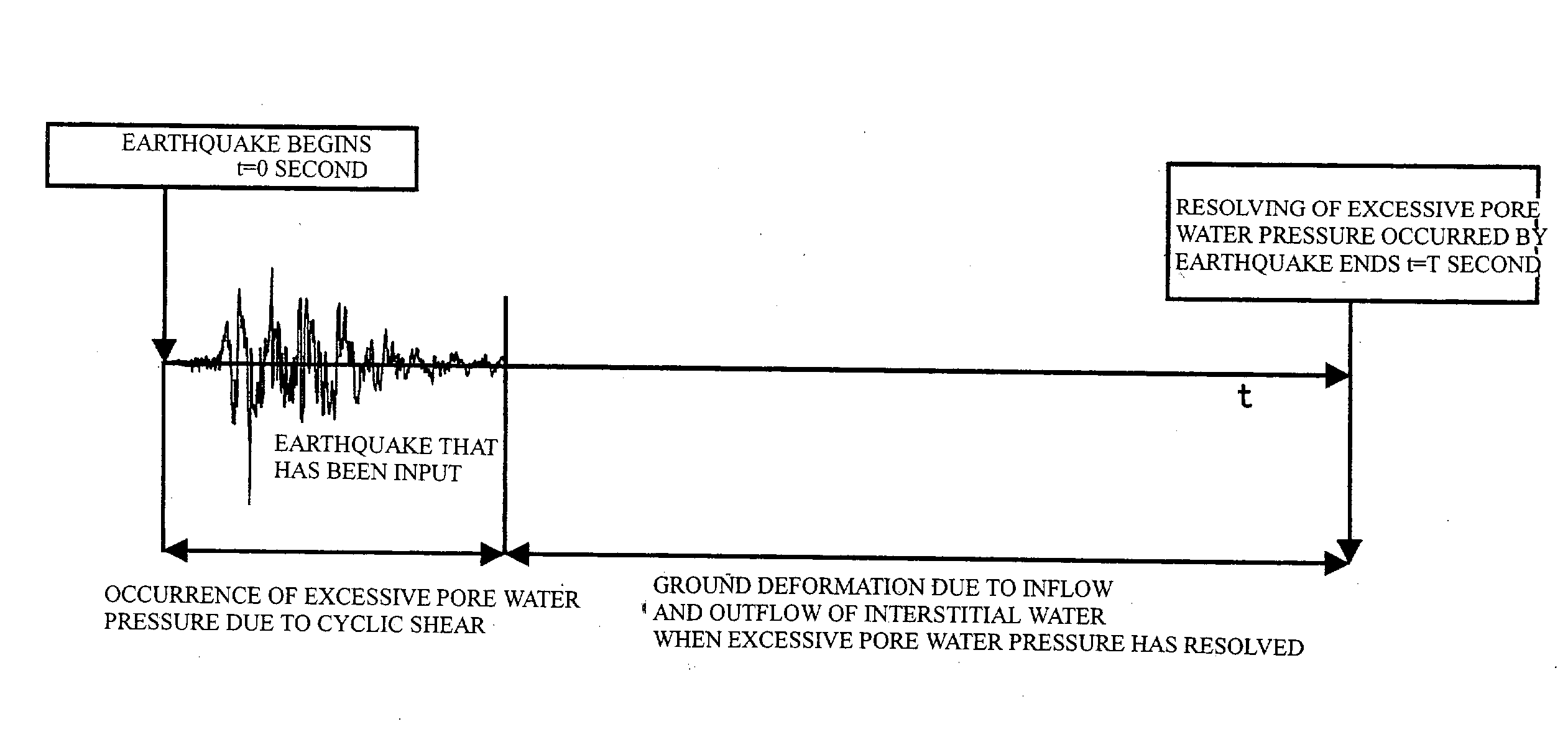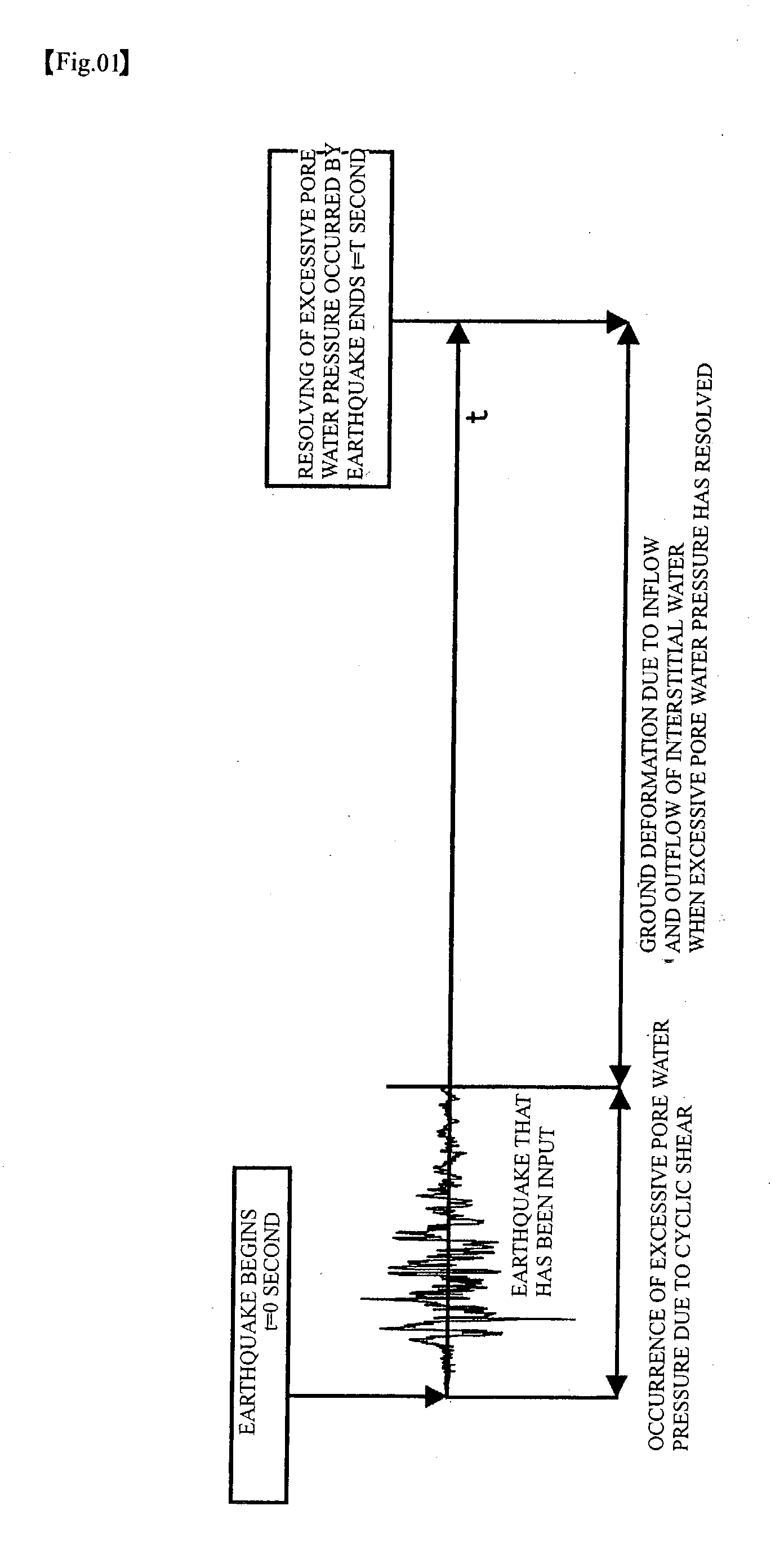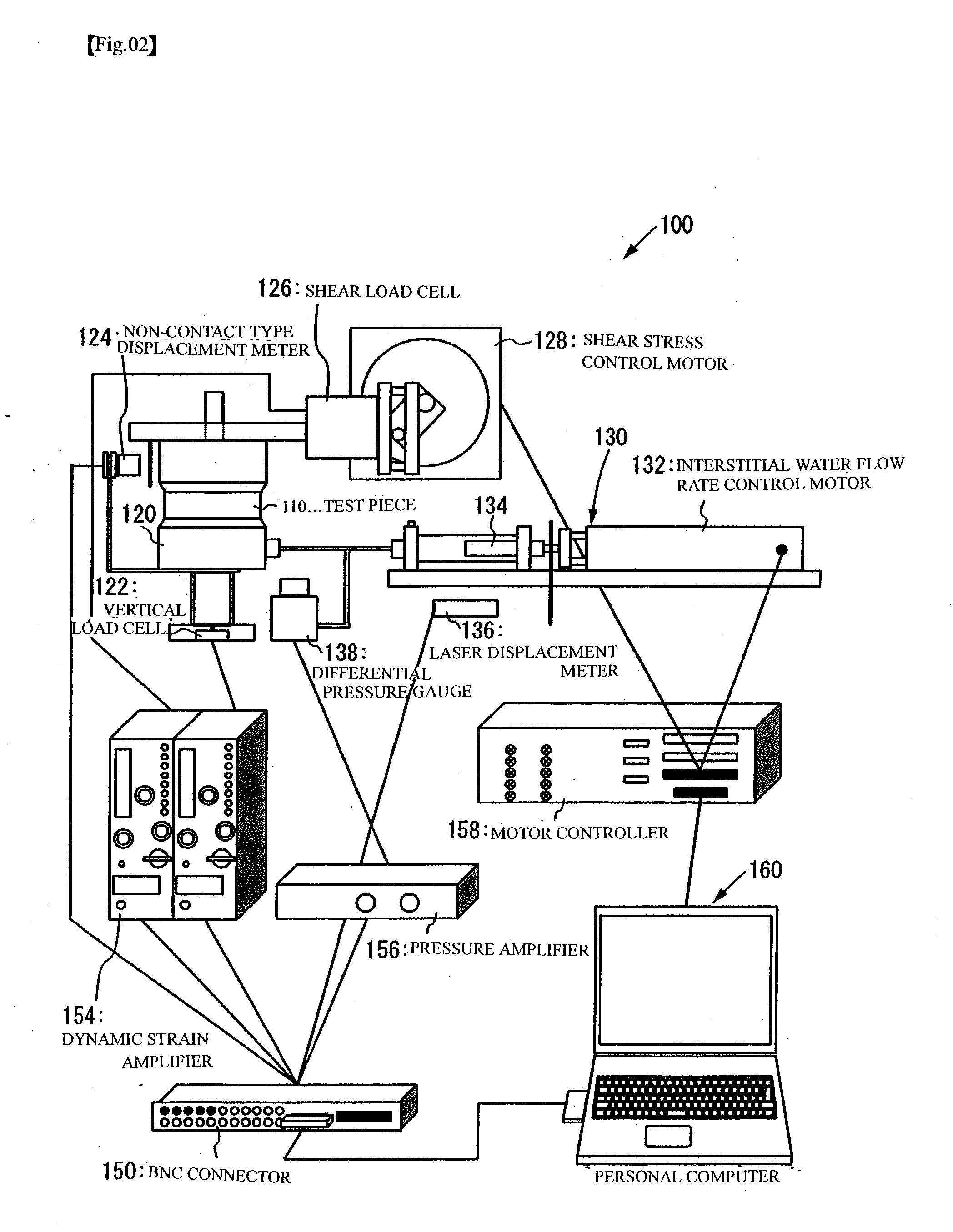Liquefaction phenomenon prediction system
a prediction system and phenomenon technology, applied in the direction of simultaneous indication of multiple variables, electrical/magnetic measuring arrangements, vibration measurement in solids, etc., can solve the problems of insufficient universalization of soil behavior, insufficient complexity of soil in situ behavior, and inability to explain a real phenomenon
- Summary
- Abstract
- Description
- Claims
- Application Information
AI Technical Summary
Problems solved by technology
Method used
Image
Examples
Embodiment Construction
[0025] Preferred embodiments of the present invention will be described using the accompanying drawings.
[0026] The present invention is a system that replaces the cyclic shear behavior of soil not with a numerical model but with behavior that is directly obtained from element test for a soil sample in situ. In the present invention, this system can find the residual settlement quantity and the residual horizontal displacement of ground.
[0027] Furthermore, to predict the shear strain quantity that progressively develops after vibration, the present invention is a prediction system of seepage flow deformation quantity after earthquake, which has directly incorporated the behavior of soil element in situ as well as during earthquake using a seepage flow analysis that has incorporated mechanism where excessive pore water pressure occurred during earthquake penetrates and moves after vibration and ground thus fails and deforms.
[0028] FIG. 2 shows the entire experimental apparatus 100 use...
PUM
| Property | Measurement | Unit |
|---|---|---|
| shear stress | aaaaa | aaaaa |
| interstitial water | aaaaa | aaaaa |
| pore water pressure | aaaaa | aaaaa |
Abstract
Description
Claims
Application Information
 Login to View More
Login to View More - R&D
- Intellectual Property
- Life Sciences
- Materials
- Tech Scout
- Unparalleled Data Quality
- Higher Quality Content
- 60% Fewer Hallucinations
Browse by: Latest US Patents, China's latest patents, Technical Efficacy Thesaurus, Application Domain, Technology Topic, Popular Technical Reports.
© 2025 PatSnap. All rights reserved.Legal|Privacy policy|Modern Slavery Act Transparency Statement|Sitemap|About US| Contact US: help@patsnap.com



